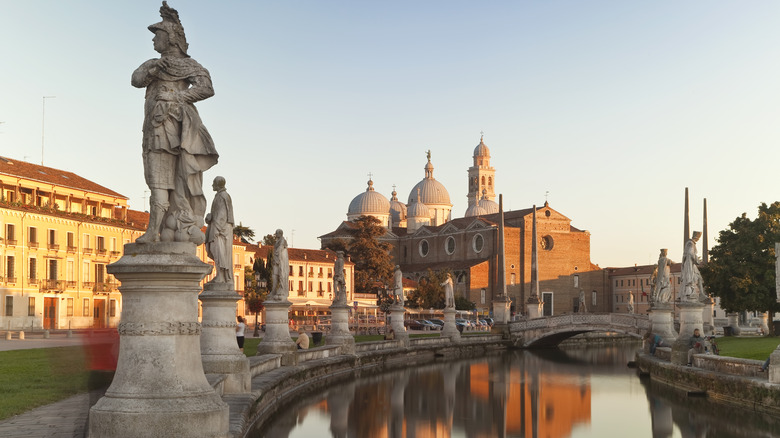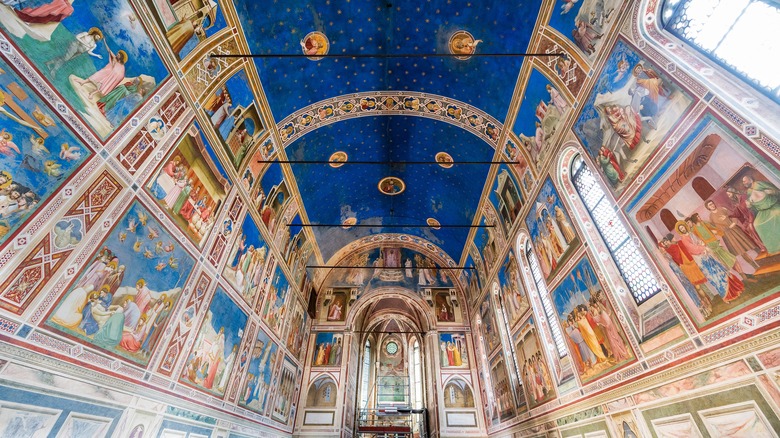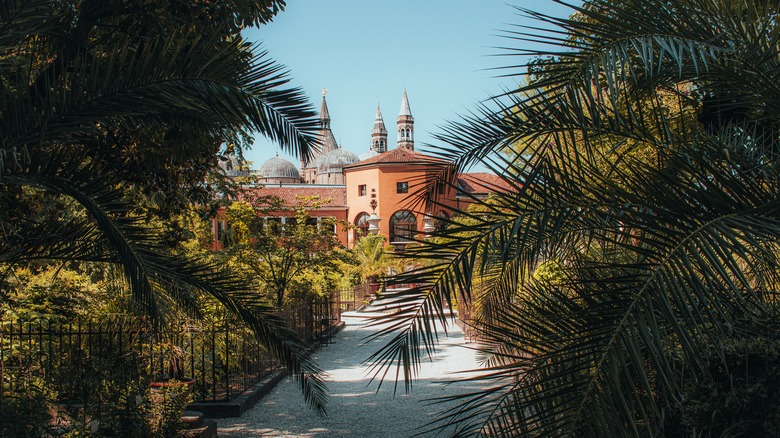One Of Italy's Oldest Destinations Is An Overlooked, Youthful University Town Rich With History
Founded in the 12th century B.C., Padua, Italy, is an ancient gem of a city where history comes alive. Often bypassed in favor of its more famous (and touristy) neighbor, Venice, which is located 25 miles east, Padua is worth a visit for experienced travelers who want to explore a less crowded city with a treasure trove of art, history, and delicious Italian food and drink. In fact, this city is where the beloved Aperol Spritz was invented. The University of Padua — one of the oldest in the world — infuses the city with youthful energy despite its age. Over 70,000 students spend their time learning here at one of the birthplaces of modern academics.
Today, Padua is especially famous for its two World Heritage Sites: the 14th-century frescos found throughout the city, especially Giotto's masterpiece of Scrovegni Chapel, and the Botanical Gardens. Beyond these two must-see Italian landmarks, you should take time to stroll Padua's cobblestone passages, browse the many museums at the University, and indulge in authentic Italian meals at quaint cafes.
Chapels in Padua
In 2021, UNESCO declared Padua's 14th-century fresco cycles a World Heritage Site. The crown jewel of Padua is arguably Scrovegni Chapel with frescos by Giotto that mark an incredibly important moment in art history. The cycles, which chronicle the Life of Christ and Life of the Virgin Mary, cover the entirety of the chapel. The humanism of Giotto's figures broke away from the rigidity of Byzantine art, and his focus on perspective and dimensions helped to bring about the Renaissance. The chapel is open daily from 9 a.m. to 7 p.m. with tickets starting at 12 euros at the time of this writing.
Another important landmark is the Basilica of Saint Anthony of Padua, which was built in the 13th century to commemorate the patron saint of Padua. The basilica, with its mix of domes, spires, and flat facades, blends the architectural styles of Gothic, Byzantine, and Romanesque. Inside masterpieces abound, from Donatello's bronze sculptures of Saint Anthony to a fresco recounting the crucifixion of Altichiero da Zevio, which is also notable for its innovative technique. The basilica is open daily from 6:15 a.m. to 6:45 p.m.
Exploring the University of Padua
The University of Padua, one of the 10 oldest universities the world, is a wonder to behold. Explore the centuries-old campus, which includes such unique landmarks as the Anatomical Theatre of Padua, where anatomies and dissections took place. The university is also home to many museums that are open to the public, such as the Museum of Archaeological Sciences and Art, the Enrico Bernardi Museum of Machines, the Geography museum, and an Astronomical Observatory.
For a pleasant city break, visitors especially should not miss a stroll through the Botanical Gardens, among the world's first. Originally meant for the study of medicinal plants, the gardens and its buildings cover over five acres and host more than 3,500 plant species. It was established as a UNESCO World Heritage Site in 1997. The gardens are open year round, with hours depending on the time of year.


